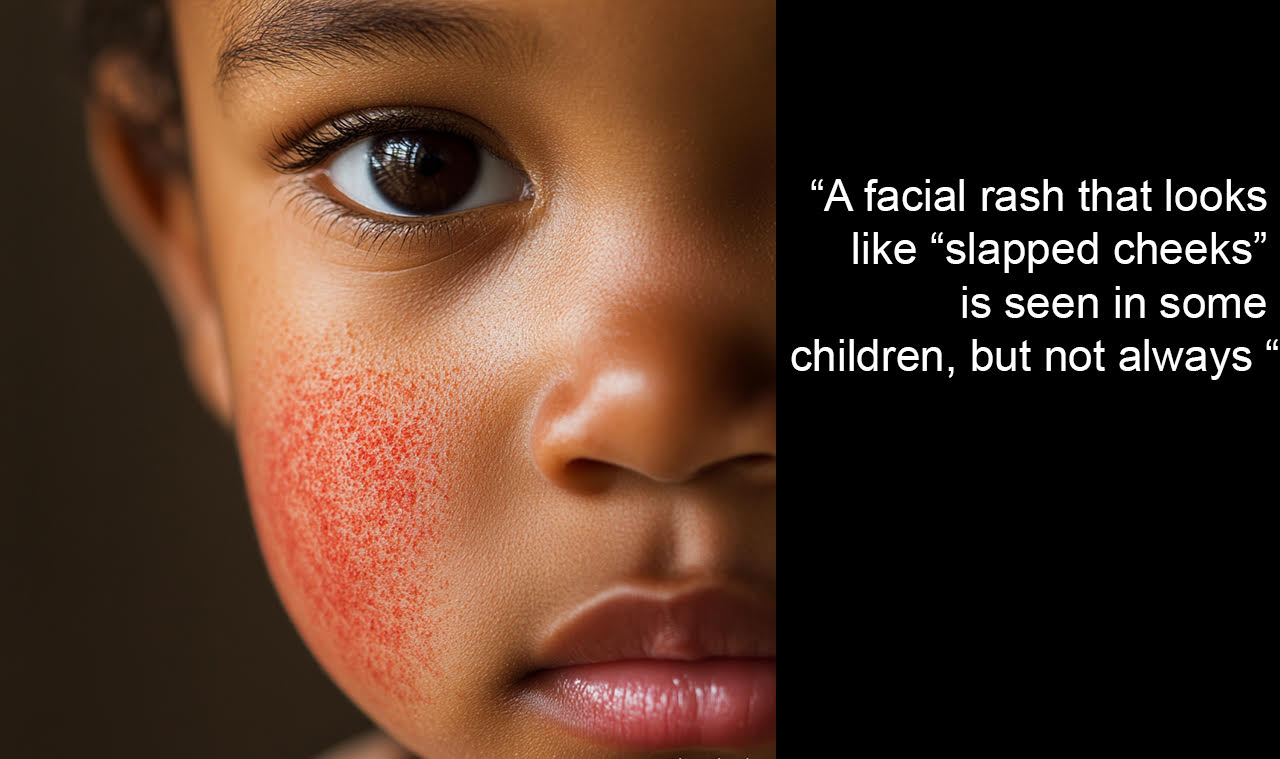
Parvovirus B19, Fever and Urgent Care
Aug. 13, 2024 – More infections with parvovirus B19, also known as the “fifth disease” or “slapped-cheek disease,” are showing up in 2024 [1,2].
WHY IS THIS IMPORTANT FOR SICKLE CELL DISEASE?
⦁ Parvovirus B19 causes a special problem in sickle cell disease called aplastic crisis [3,4,5], infects the bone marrow, and stops the production of red blood cells for about 10 days. Reticulocyte counts (number of young red blood cells) drop to zero. Hemoglobin can drop to dangerously low levels in people with sickle cell disease and other conditions with short-lived red blood cells (hemolytic anemias). A red blood cell transfusion is often needed.
⦁ Parvovirus can cause other SCD problems like acute chest syndrome, enlarged spleen, and damage to many parts of the body. These problems can also require hospital treatment.
HOW DO YOU DETECT PARVOVIRUS B19 INFECTION?
⦁ Checking for parvovirus B19 infection requires blood tests: reticulocyte count and parvovirus testing by PCR.
⦁ Symptoms of parvovirus infection overlap with the symptoms of many other respiratory infections: fever, headache, respiratory symptoms, and fatigue.
⦁ A facial rash that looks like “slapped cheeks” is seen in some children, but not always. Pregnant women usually do not get this rash.
HOW DOES PARVOVIRUS B19 SPREAD?
⦁ Parvovirus spreads in the air from one child to another.
⦁ Avoiding people with respiratory symptoms, wearing masks and washing hands can help to reduce the spread of parvovirus B19.
⦁ Most adults have had parvovirus B19. The previous infection protects them from getting it again.
⦁ Because parvovirus B19 and COVID-19 are both respiratory viruses, their spread can be prevented in similar ways. Widespread use of COVID-19 precautions likely lowered the number of people with parvovirus exposure in the past few years. However, the larger vulnerable group who were not exposed to parvovirus B19 can now catch it.
WHO IS VULNERABLE TO PARVOVIRUS B19?
- Children
- People with sickle cell disease, thalassemia, and other hemolytic anemias. They might need a blood transfusion.
- People with severe immunocompromise (such as AIDS, cancer chemotherapy, or transplant
- immunosuppression). They might need to have antibody treatment to clear the parvovirus infection.
- Pregnant women. Catching parvovirus B19 during pregnancy means a higher risk of miscarriage. Pregnant women should avoid children with parvovirus B19.
CAN A CHILD WITH SCD BE EVALUATED FOR PARVOVIRUS IN AN URGENT CARE OR PRIMARY CARE CLINIC?
Although they seem convenient, most urgent care centers and primary care clinics cannot do immediate (STAT) reticulocyte count. Emergency departments can perform these steps in the appropriate medical evaluation of a child with SCD and fever above 101.3 F:
⦁ Blood counts including reticulocyte count, with results within an hour or two (STAT)
⦁ Blood culture
⦁ Physical exam including spleen
⦁ Pulse oximetry, blood pressure and other vital signs
⦁ Antibiotic injection (usually ceftriaxone) to clear bacteria
⦁ Possible chest X-ray to rule out acute chest syndrome
DON’T DOGS GET PARVOVIRUS?
- Dogs get other kinds of parvovirus (CPV-1 or CPV-2), not parvovirus B19. You cannot get the infection from your pet, and you cannot infect your pet.
RECOMMENDATIONS:
⦁ Children with SCD and fever should be evaluated promptly in emergency departments, and families should clearly state at the intake desk (triage) that the child has sickle cell disease immunocompromised with fever.
⦁ Medical evaluation of a child with SCD and fever should include CBC and reticulocyte count, with STAT results. Low reticulocyte count (absolute reticulocytes below 10,000 per microliter) should raise concern about aplastic crisis from parvovirus B19, and the child should not be discharged home without a plan for possible blood transfusion.
⦁ Families of children with SCD and fever should not go to urgent care centers and clinics that lack the capability to do STAT labs. These types of centers and clinics should not delay sending a child with SCD and fever to a medical facility that can provide appropriate care, usually an emergency department.
REFERENCES:
⦁ Increase in human parvovirus activity in the United States. CDC Health Alert Network CDCHAN-00514. August 13, 2024 https://emergency.cdc.gov/han/2024/han00514.asp
⦁ Risks posed by reported increased circulation of human parvovirus B19 in the European Union / EEA. June 5, 2024 https://www.ecdc.europa.eu/sites/default/files/documents/Risks%20posed%20by%20reported%20increased%20circulation%20of%20human%20parvovirus%20B19%20FINAL.pdf
⦁ Sickle cell aplastic crisis. Texas Department of Health https://www.dshs.texas.gov/newborn-screening-program/sickle-cell-disease/more-about-sickle-cell/aplastic-crisis
⦁ Sickle Cell aplastic crisis. Childrens Healthcare of Atlanta. ⦁ https://www.choa.org/-/media/Files/Childrens/teaching-sheets/sickle-cell—aplastic-crisis.pdf
⦁ Sickle cell aplastic crisis. Cleveland Clinic. https://my.clevelandclinic.org/health/diseases/24557-aplastic-crisis




